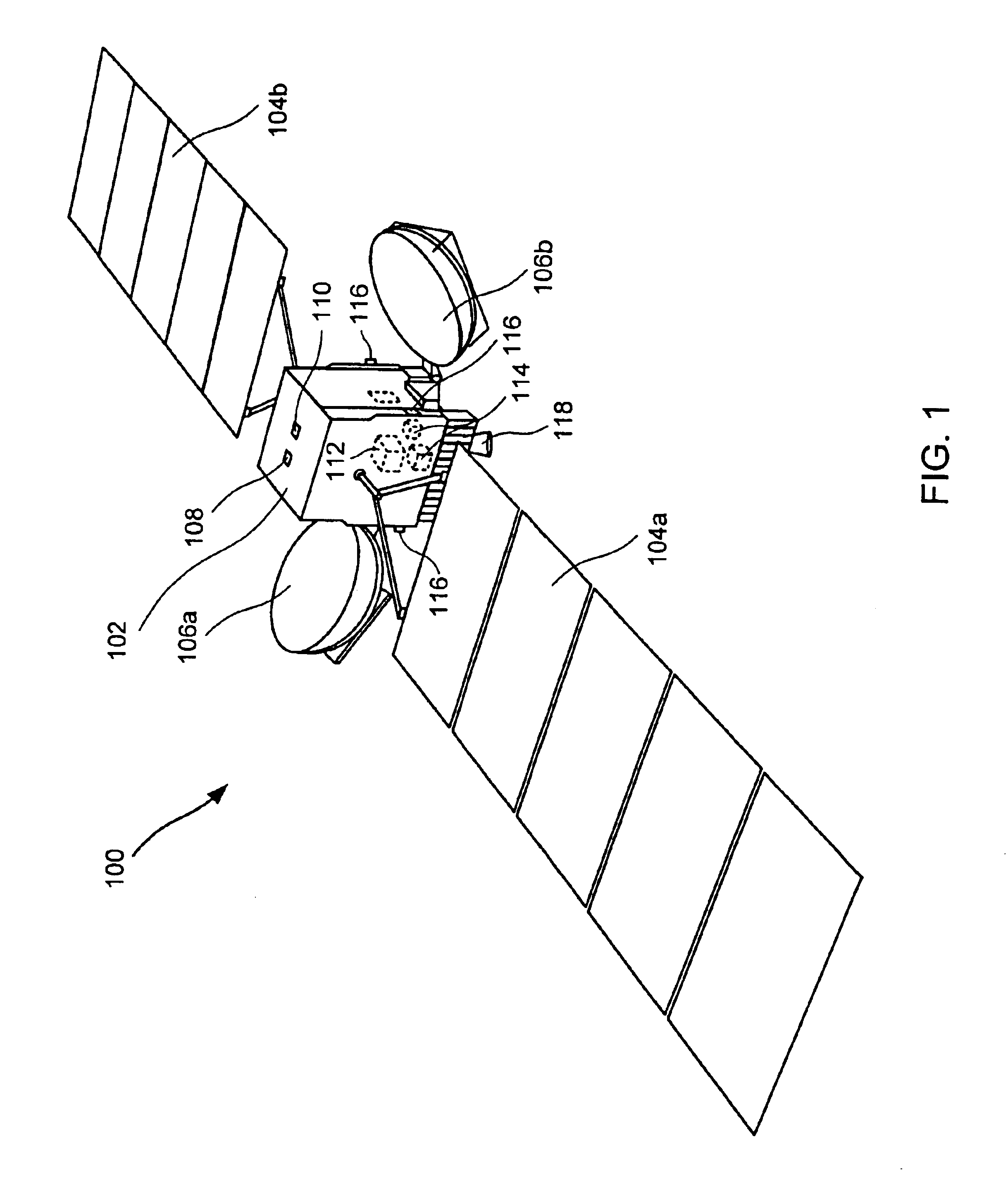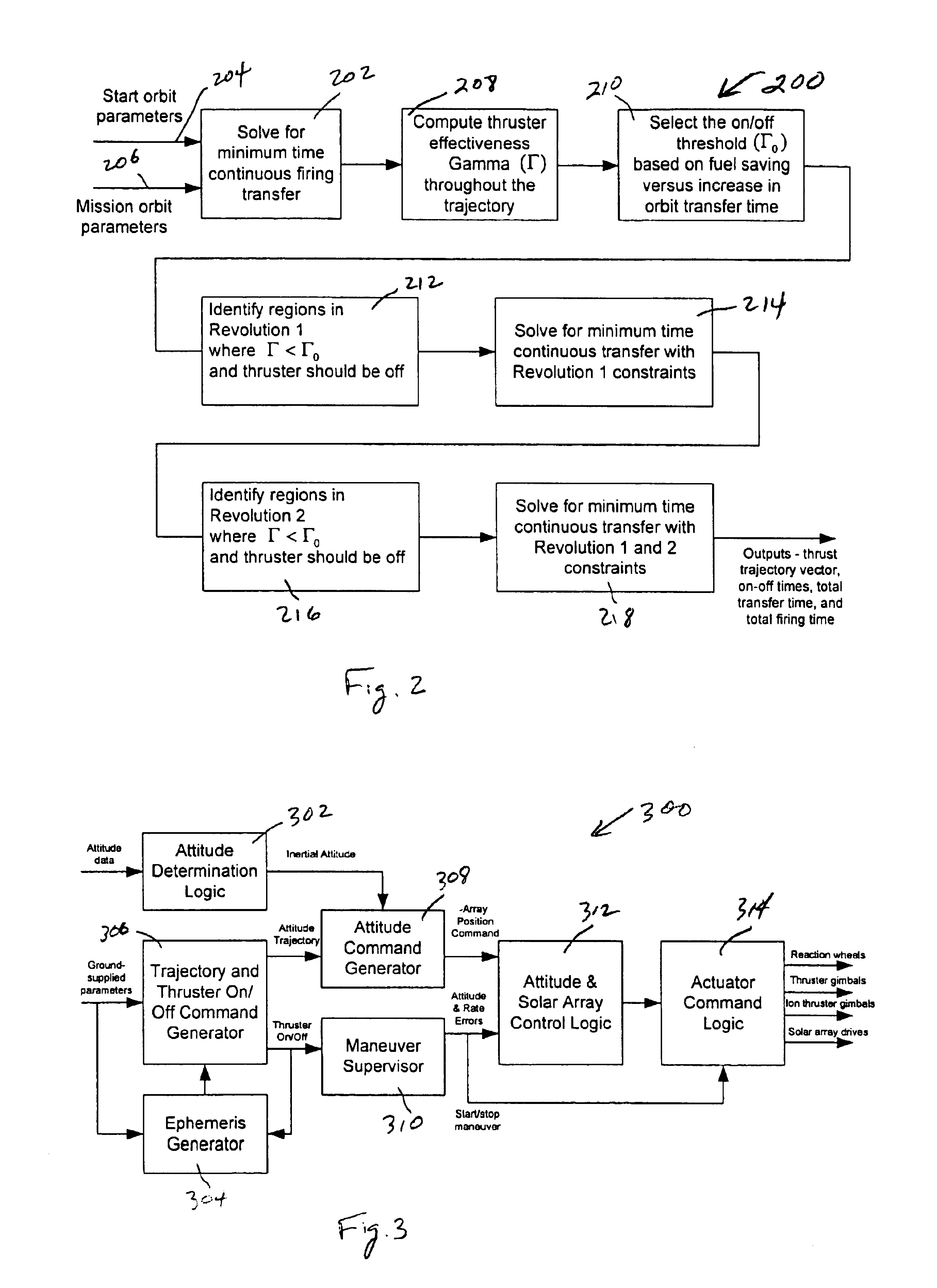System for high efficiency spacecraft orbit transfer
a high-efficiency, spacecraft technology, applied in the field of orbit transfer techniques, can solve the problems of affecting the performance of the orbit transfer approach, the time allocated to transfer the spacecraft, and the general capacity of the launch vehicle to place the spacecraft into the orbit of the mission,
- Summary
- Abstract
- Description
- Claims
- Application Information
AI Technical Summary
Benefits of technology
Problems solved by technology
Method used
Image
Examples
Embodiment Construction
The present invention relates to a orbit transfer techniques, and more particularly to systems and methods for efficiently transferring a spacecraft from one orbit to another orbit.
Prior-art systems use a continuous-firing orbit transfer strategy, in which the ion thrusters are fired almost continuously over some period to provide a transfer from an initial to a final orbit. One drawback of firing ion thrusters continuously to carry-out an orbit transfer is that there may be some portions of the orbit where firing the thrusters is of only marginal benefit. Thus during those portions of the orbit, fuel is expended, but only a very small useful change in the orbit is achieved. To address this problem, the systems and methods of the present invention determine a spacecraft thrust vector trajectory and off-firing regions that eliminate these inefficient thrusting regions. As a result, the spacecraft orbit transfer requires less fuel, and thus, larger, more capable payloads can be put in...
PUM
 Login to View More
Login to View More Abstract
Description
Claims
Application Information
 Login to View More
Login to View More - R&D
- Intellectual Property
- Life Sciences
- Materials
- Tech Scout
- Unparalleled Data Quality
- Higher Quality Content
- 60% Fewer Hallucinations
Browse by: Latest US Patents, China's latest patents, Technical Efficacy Thesaurus, Application Domain, Technology Topic, Popular Technical Reports.
© 2025 PatSnap. All rights reserved.Legal|Privacy policy|Modern Slavery Act Transparency Statement|Sitemap|About US| Contact US: help@patsnap.com



